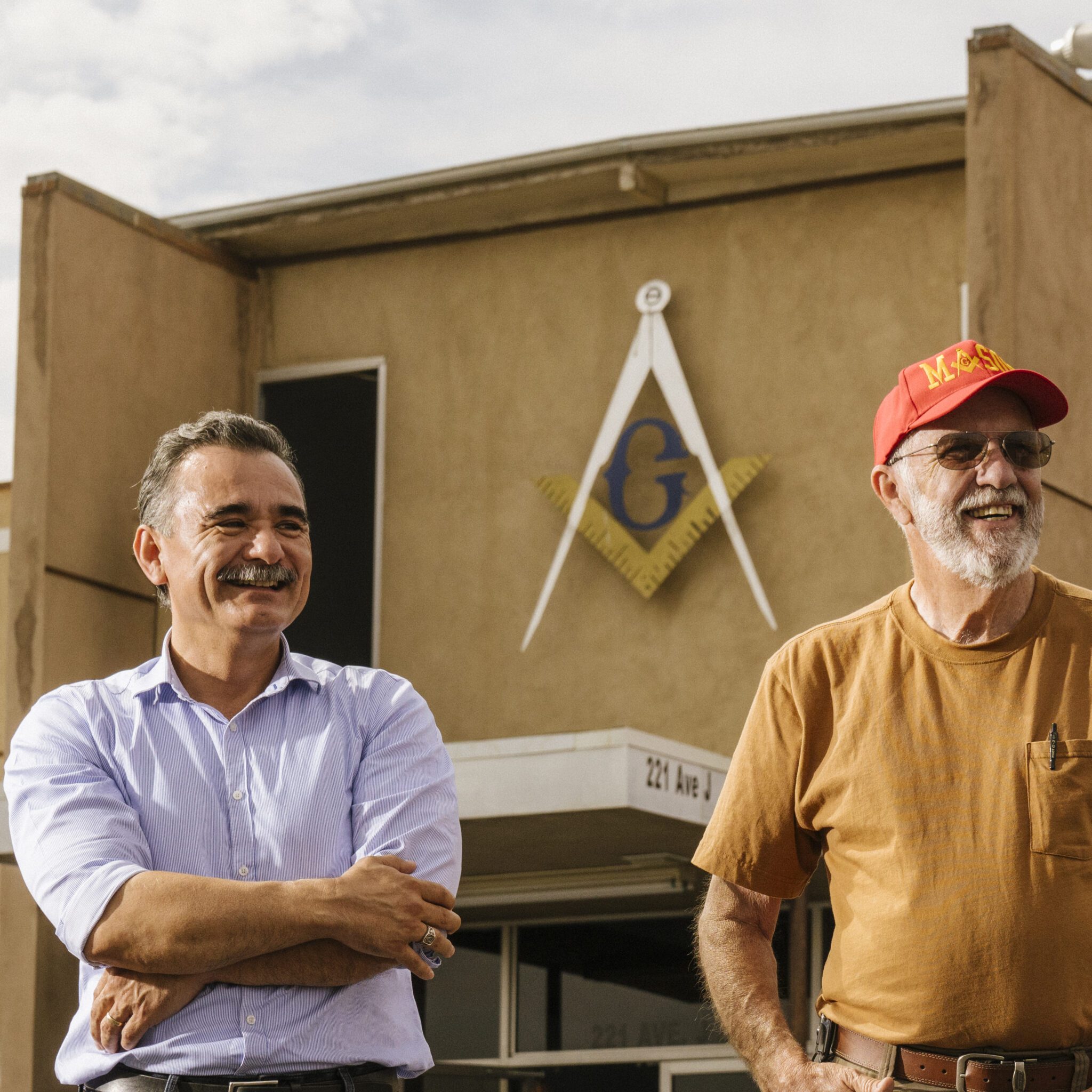
Nights at the Round Table
Round Table Lodge No. 876 on friendship, camaraderie, and squashing beefs.
By Ian A. Stewart
If a picture’s worth a thousand words, then what’s a never-before-seen glimpse into the symbology of a secret and mystical fraternal order worth?
That’s the question at the heart of a new exhibition from the Henry Wilson Coil Library and Museum of Freemasonry, Illustrations of Masonry. The exhibition breaks down the illustrated engravings by artist John Pine that adorn the frontispiece of James Anderson’s 1723 Constitutions of Free Masonry, the first-ever rulebook for the organization. Before its printing, these symbols had never been seen before. On the 300th anniversary of its publication, museum director Joe Evans explains these depictions were so groundbreaking.
Hover over the icons above to reveal these symbolic gestures.

Man Carrying Aprons
“This book’s publication represents the first time anyone has seen Masonic regalia depicted like this. But people would recognize that this is about ritual and special regalia. It’s a big deal in the 17th and 18th century— it tells people you belong to a special group.”
Two Figures at Center
John, the second duke of Montagu (Grand Master 1721–22), with his deputy and wardens handing the constitutions to his successor, Phillip, Duke of Wharton (Grand Master 1722–23).
“This is where the fraternity moves into the aristocratic realm, away from the guilds and tradespeople. Once the first grand lodge was established in 1717, you saw elites coming in and that became attractive to other elites; that’s how you get your philosophers and professionals interested. That’s why seeing these figures is so important.”
2 of 6Two Figures at Center
John, the second duke of Montagu (Grand Master 1721–22), with his deputy and wardens handing the constitutions to his successor, Phillip, Duke of Wharton (Grand Master 1722–23).
“This is where the fraternity moves into the aristocratic realm, away from the guilds and tradespeople. Once the first grand lodge was established in 1717, you saw elites coming in and that became attractive to other elites; that’s how you get your philosophers and professionals interested. That’s why seeing these figures is so important.”
3 of 6The Sun God Apollo in Chariot
“Apollo is the representation of classical literature and knowledge. You could argue that, at that time, the Masonic lodge was one of the only places that knowledge was being kept. At the end of the renaissance, that was really attractive to people.”
4 of 6Columns Representing The Orders Of Architecture
“Masons Who’ve Gone Through Their Initiation Will Recognize This From The Lecture In The Second Degree. They Go In Descending Order: Doric, Ionic, Corinthian, Tuscan, Composite.”
The 47th Proposition of Euclid
“This is where the geometry part comes in. It’s one of the reasons masonry was attractive to people during the age of reason. The Masons were some of the only people who’d mastered these liberal arts. Within a lodge, Masons were teaching apprentices about geometry, mathematics, how a plumb works—it was like going to school. Not a lot of people realize that’s why lodges were so attractive.”
Illustration Courtesy:
Henry Wilson Coil Museum & Library of Freemasonry

Round Table Lodge No. 876 on friendship, camaraderie, and squashing beefs.

In Barstow, one lodge’s reputation for camaraderie is known for miles around.

With the brand-new Pavilion, the Masonic Homes opens specialized care to all.